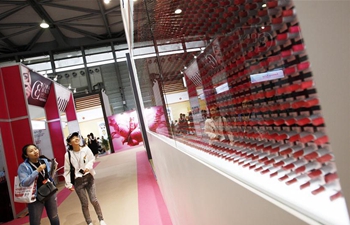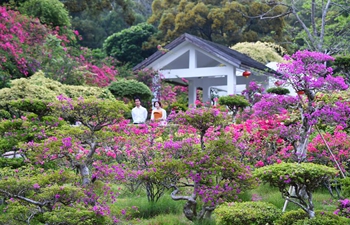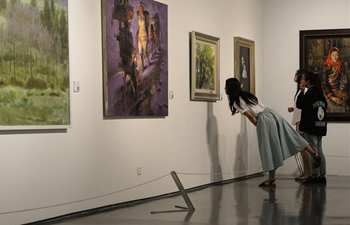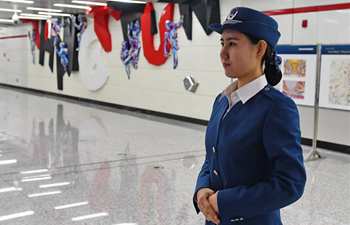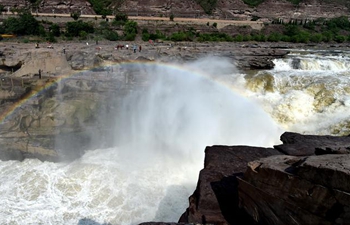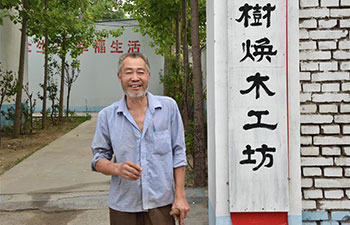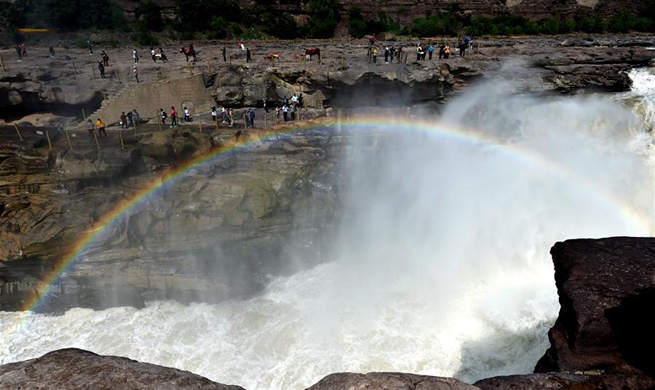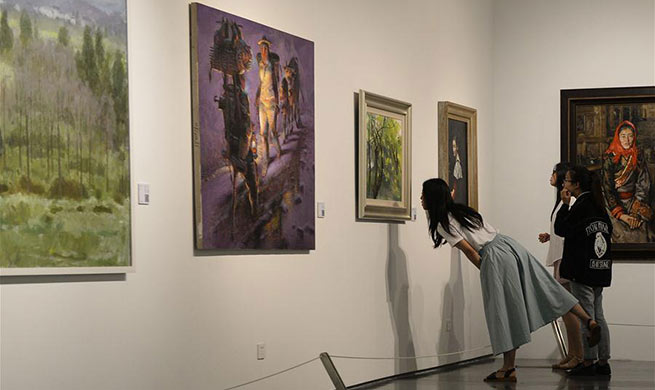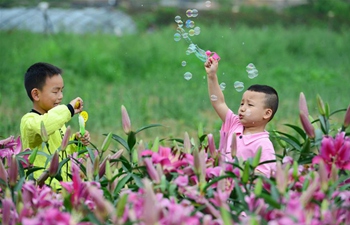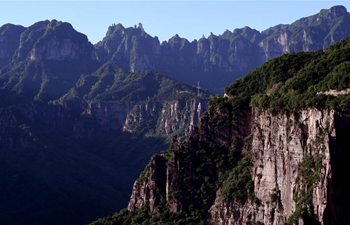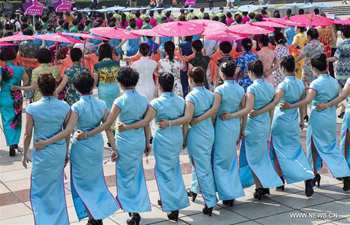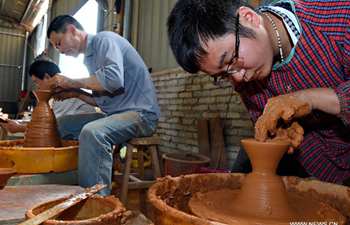BEIJING, May 23 (Xinhua) -- Many residents of the narrow alleyways, or hutongs, of central Beijing would never have dreamed of a brook running past their front doors.
But back in 15th century, there was a river course in the Qianmen area near today's Tian'anmen Square, the geographic center of the city.
The 600-meter-long brook ran through an area of 26 cultural relic buildings, including 18 guild halls from China's various provincial-level regions, a demonstration of the strong commercial structure of the area 500 years ago.
Many of those historic buildings remain and have now been protected or preserved. Some are open to the public, while others may be opened in the future. Thanks to the latest city landscaping plan, the waterway has been returned to rejuvenate the historic area.
Green spaces and flower gardens line the riversides with wooden walkways, stone bridges and traditional pavilions dotted around the area, which just one year ago was cluttered with shabby and dilapidated bungalows.
A project was launched last August to recreate the historic landscape of the area, protect the historic buildings and improve the living environment for nearby residents. The project was completed in April.
"The alley used to be narrow and winding, crowded by bungalows with weeds taking over the roof. After the renovation had been completed, I could barely recognize the neighborhood," said Ding Shufeng, a local resident.
Qianmen is a landmark commercial zone, with dozens of well-known traditional restaurants and souvenir stores that attract millions of tourists.
"It is a must-see area for both international and domestic visitors, but the renovations have secured some peace and tranquility for the residents who live just steps away. It's ingenious," said Su Shuyang, who composed the introduction carved on a stone tablet at the entrance to the renovated area.
In 2017, the Beijing municipal government started a three-year campaign to reinvigorate nearly 2,500 alleys in its core districts of Dongcheng and Xicheng. Landscape designers were invited to provide submissions for each area. A total of 761 alleys have been renovated so far, including many in and around Qianmen.
"I wanted the brook to act as a ribbon linking the history, culture, environment and art within the area," said Zhu Junfu, the designer.
Zhu's design philosophy was shared by Wang Shiren from the city's history and culture preservation committee. Wang said creative ideas are needed to preserve the city's traditional hutongs.
As part of the central government's efforts to actively decentralize the city center and expand green areas, it has begun to clear the capital of non-essential functions and upgrade the living conditions for city residents. Many markets and businesses have been moved to the city's suburbs, and residents relocated from decrepit and rundown housing into new residential areas. More parks, greenbelts and water courses will be constructed in downtown areas.
Cai Qi, Beijing's mayor, said the city will add another 600 hectares of green areas, including 15 new parks as well as 50 small greenbelts, by the end of this year.
The city government will continue to preserve the appearance of the ancient capital, while providing more public services for its residents. It will not be difficult to add the sights and sounds of nature to the lives of hutong dwellers in the bustling city center, Cai said.




